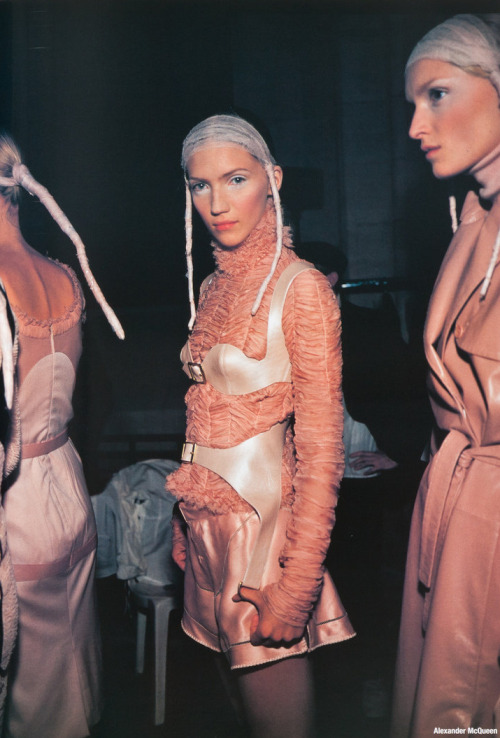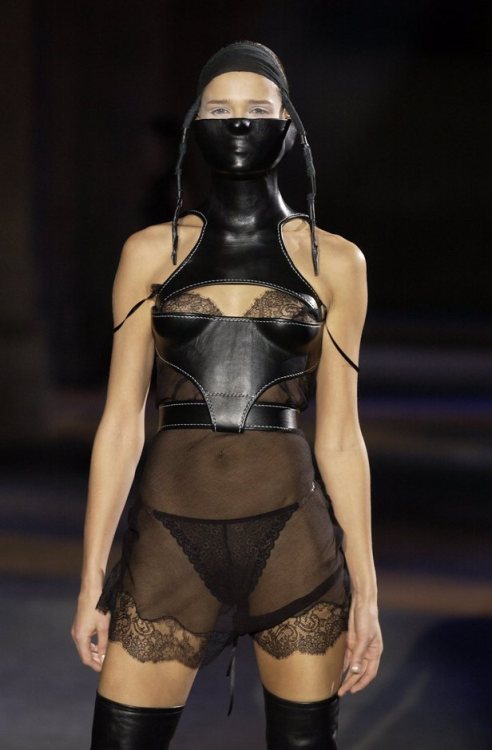This collection saw McQueen revert swiftly back
to a darker, more gothic aesthetic by reintroducing leather, S&M and even
the ‘bumster’ into his design repertoire. Staged in the building where Marie
Antoinette is thought to have taken her last steps, McQueen’s ‘Supercalifradgilisticexpialidocious’
collection (which can be seen in full here) turned its set into a medieval
fairytale castle, complete with white wolves prowling the upper echelons of the
dilapidated stone building.
The title obviously comes courtesy of British
classic ‘Mary Poppins’, and the woman herself seems to be referenced throughout
the collection via subtle nods towards authority. The show sees reinvented
versions of classic school uniforms complete with shirt and tie as well as
pleated gym skirts and slim-fit striped blazers. Models walked with their heads
bound tightly in leather caps and the S&M detailing littered throughout the
collection created a subversive undercurrent, representing a woman submitting
to authority. Ultra-feminine princess dresses were also shown in layers of
frothy organza, mimicking the archetypical ‘damsel in distress’ that worked
alongside the show’s grandiose surroundings.
McQueen also found several ways to reference his
own work in the collection, helping it serve almost as a retrospective – a welcome
move after the frivolous, slightly forgettable ‘Dance of the Twisted Bull’.
There were plenty of references to the grotesque imagery that the designer was
always enamoured with, and some of the looks appeared to be reworkings of his
greatest hits – the leather caps recalled the restrictive bandages of ‘VOSS’,
the opening look served as a reference to ‘Joan’ and of course the silver leather
bumsters served as a reminder of one of McQueen’s most provocative looks.
Overall, the collection was reassurance that the
fundamental reference points of the iconic designer hadn’t been completely
buried under the tidal wave of financial reward that had recently submerged the
‘McQueen’ aesthetic. The show, again, is one that isn’t as widely-known, and it
seemed to signify that the designer’s creative ‘imperial phase’ had ended and
been replaced by a global phenomenon that was now truly making clothes for a
mass market. There were still hints of genius in the collection, but the
overall feeling was one of restriction. After his own ‘Holy Trinity’ (The
Eye/Eshu/VOSS), it was now time for McQueen to settle into his role as the
comfortable leader of a fashion empire – even at this point he was still more
controversial and influential than the majority of his counterparts, but it
seemed that he no longer felt the need to push boundaries.



No comments:
Post a Comment